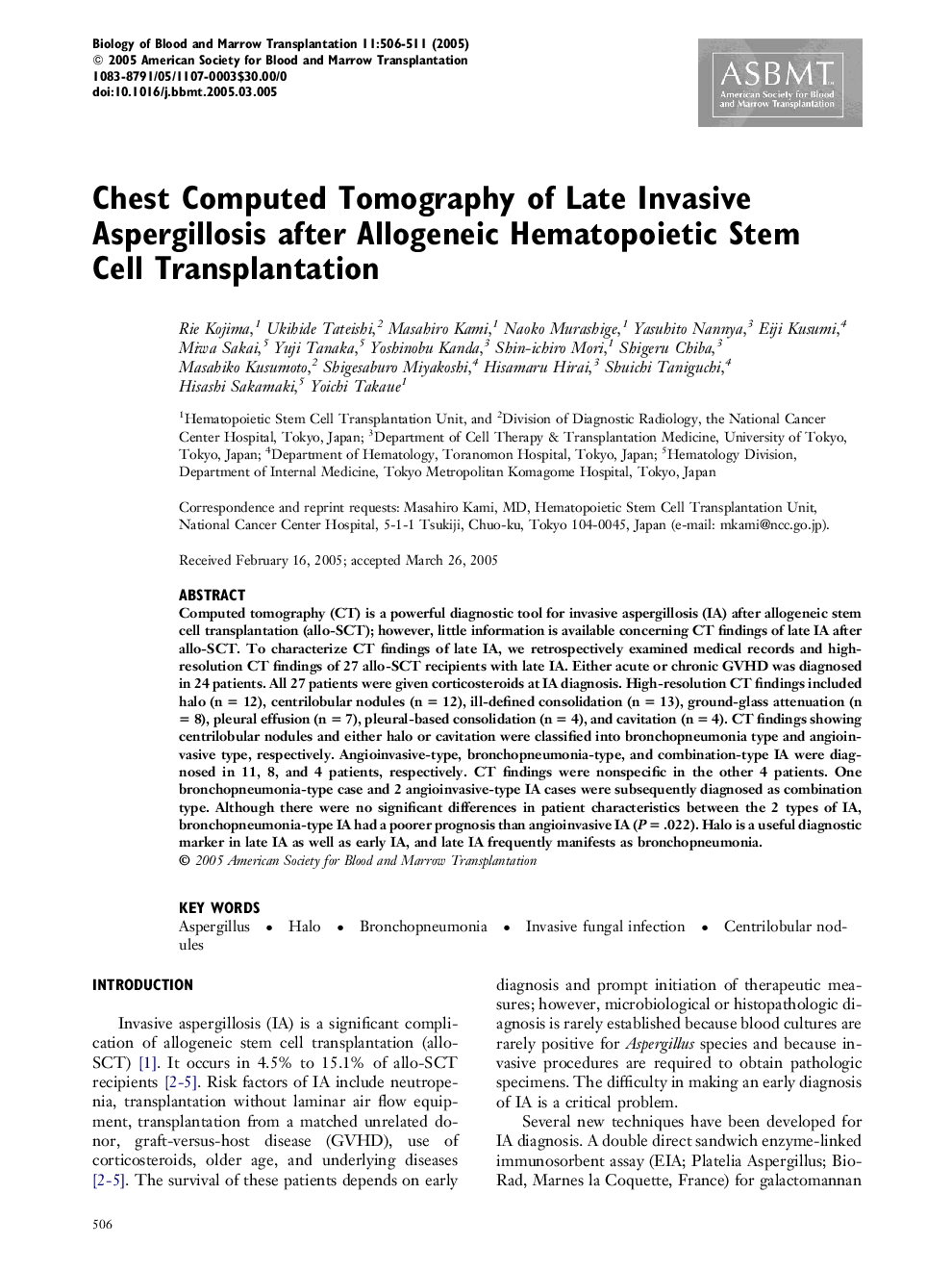| Article ID | Journal | Published Year | Pages | File Type |
|---|---|---|---|---|
| 9904192 | Biology of Blood and Marrow Transplantation | 2005 | 6 Pages |
Abstract
Computed tomography (CT) is a powerful diagnostic tool for invasive aspergillosis (IA) after allogeneic stem cell transplantation (allo-SCT); however, little information is available concerning CT findings of late IA after allo-SCT. To characterize CT findings of late IA, we retrospectively examined medical records and high-resolution CT findings of 27 allo-SCT recipients with late IA. Either acute or chronic GVHD was diagnosed in 24 patients. All 27 patients were given corticosteroids at IA diagnosis. High-resolution CT findings included halo (n = 12), centrilobular nodules (n = 12), ill-defined consolidation (n = 13), ground-glass attenuation (n = 8), pleural effusion (n = 7), pleural-based consolidation (n = 4), and cavitation (n = 4). CT findings showing centrilobular nodules and either halo or cavitation were classified into bronchopneumonia type and angioinvasive type, respectively. Angioinvasive-type, bronchopneumonia-type, and combination-type IA were diagnosed in 11, 8, and 4 patients, respectively. CT findings were nonspecific in the other 4 patients. One bronchopneumonia-type case and 2 angioinvasive-type IA cases were subsequently diagnosed as combination type. Although there were no significant differences in patient characteristics between the 2 types of IA, bronchopneumonia-type IA had a poorer prognosis than angioinvasive IA (P = .022). Halo is a useful diagnostic marker in late IA as well as early IA, and late IA frequently manifests as bronchopneumonia.
Related Topics
Life Sciences
Biochemistry, Genetics and Molecular Biology
Cancer Research
Authors
Rie Kojima, Ukihide Tateishi, Masahiro Kami, Naoko Murashige, Yasuhito Nannya, Eiji Kusumi, Miwa Sakai, Yuji Tanaka, Yoshinobu Kanda, Shin-ichiro Mori, Shigeru Chiba, Masahiko Kusumoto, Shigesaburo Miyakoshi, Hisamaru Hirai, Shuichi Taniguchi,
